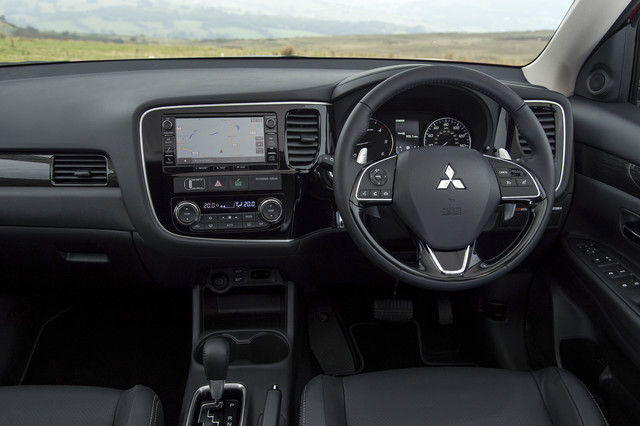If someone was to mention the Mitsubishi Outlander nowadays, you can probably assume that they were talking about the hybrid version. That’s because the Plug-in Hybrid (PHEV) version of the SUV has become as synonymous with eco-driving as the Toyota Prius – with Mitsubishi plastering its 156mpg figure on billboards everywhere. What some may not know, however, is that the Outlander is also available with a diesel engine.
From the outside it is very difficult to tell the difference between the two models – with badging being the only tell-tale sign. To drive however, the PHEV and diesel Outlander are night and day.
Powering the diesel Outlander is a large 2.2-litre unit producing 148bhp, capable of completing the 0-62mph sprint in 10.2 seconds. CO2 has been reduced from 154g/km to 139g/km over its predecessor, which means it matches the Land Rover Discovery Sport for emissions.
Our model had a manual gearbox and, in a lot of ways, felt like the L200 pick-up truck. Edge forward in traffic and the diesel lets off a grumble and the gearstick wobbles about – not excessively though.
Gun the accelerator and it feels heavy like a large SUV, leaning a fair bit in the corners due to its sheer size. Mitsubishi has actually tweaked the suspension slightly, making it stiffer to reduce body roll, but it is still quite prominent. The steering has also been tweaked, offering more feedback – which is more noticeable in the diesel rather than in the PHEV. We are yet to take the latest Outlander off-road, but in the wet it grips well and does what it is supposed to.

If you go for the automatic gearbox, the Outlander feels closer to the PHEV, with a driving experience that is much more serene and, essentially, effortless.
The diesel has a slight advantage over the PHEV when it comes to practicality as it is available with seven seats, something family buyers will surely appreciate. Boot storage stands at 128 litres if you have all seven seats in position, enough for a few shopping bags. If you have the five seat model then you get 591 litres to play around with.
The Outlander’s interior feels plush with some great design touches and glossy materials. However, there are a few cheap plastics dotted around in a series of different places, which makes the interior a little inconsistent when it comes to finish.
There are essentially three different types of Outlander: the PHEV, the diesel auto and the diesel manual. Those after a more rugged-feeling Outlander will love the diesel manual, but if that is a tad too agricultural, then the auto ‘box is the perfect halfway point.
Find prices for the Mitsubishi Outlander SUV



